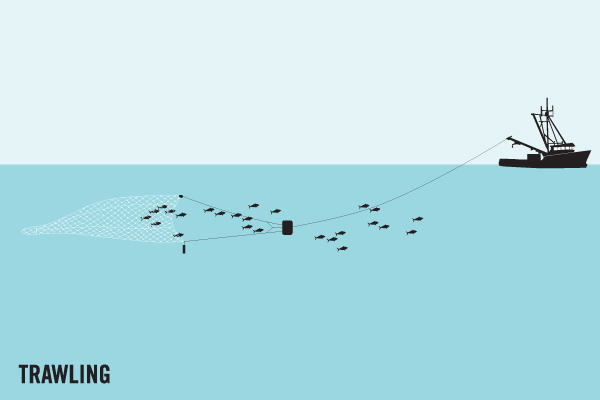Average Weight/Length
7 to 11.5 ft (2.1 to 3.4 m)
200 to 500 lbs (90 to 230 kg)
Other "Popular" Names for this Fish
Ground Shark, Cub Shark
Location Habitat
Bull sharks are aggressive, common, and usually live near high-population areas like tropical shorelines. They are not bothered by brackish and freshwater, and even venture far inland via rivers and tributaries. Because of these characteristics, many experts consider bull sharks to be the most dangerous sharks in the world. Historically, they are joined by their more famous cousins, great whites and tiger sharks, as the three species most likely to attack humans. A coastal and freshwater shark inhabiting shallow waters especially in bays, estuaries, rivers, and lakes (Ref. 244). It readily penetrates far up rivers and hypersaline bays and littoral lagoons. Capable of covering great distances (up to 180 kilometers in 24 hours), moving between fresh and brackish water at random. Adults often found near estuaries and freshwater inflows to the sea; young enter rivers and may be found hundreds of km from the sea. Feeds on bony fishes, other sharks, rays, mantis shrimps, crabs, squid, sea snails, sea urchins, mammalian carrion, sea turtles, and occasionally garbage. Viviparous. Gives birth to litters of up to 13 young. Size at birth is 56-81 cm TL. Sexual maturity is attained after 10-15 years (at a length between 160-200 centimeters). Though not commercially important, this species is a good food fish. Utilized fresh, fresh-frozen or smoked for human consumption, fins for soup, hide for leather, liver for oil, and carcass for fishmeal. Very hardy and lives well in captivity. This large shark is potentially dangerous to man, probably the most dangerous species of tropical shark, and it is repeatedly implicated in attacks on humans; attacks in fresh water are rare
Biology & Physical Description
Bull sharks get their name from their short, blunt snout, as well as their pugnacious disposition and a tendency to head-butt their prey before attacking. They are medium-size sharks, with thick, stout bodies and long pectoral fins. They are gray on top and white below, and the fins have dark tips, particularly on young bull sharks. They are found cruising the shallow, warm waters of all the world’s oceans. Fast, agile predators, they will eat almost anything they see, including fish, dolphins, and even other sharks. Humans are not, per se, on their menus. However, they frequent the turbid waters of estuaries and bays, and often attack people inadvertently or out of curiosity. Bull sharks currently are not threatened or endangered. However, they are fished widely for their meat, hides, and oils, and their numbers are likely shrinking. One study has found that their average lengths have declined significantly over the past few decades. Bull sharks have been found thousands of miles up the Amazon River, and in Nicaragua have been seen leaping up river rapids, salmon-like, to reach inland Lake Nicaragua. Dorsal spines (total): 0; Dorsal soft rays (total): 0; Anal spines: 0; Anal soft rays: 0. Diagnosis: Carcharhinus leucas is a massive shark with a short, broad and blunt snout, small eyes and triangular saw-edged upper teeth, and lack of interdorsal ridge, characters which are sufficient to distinguish this species.
Life Cycle & Mating Behavior
Viviparpous, with a yolk-sac placenta, 1-13 young in a litter. Size at birth about 60 cm TL. In the western North Atlantic off Florida and the Gulf of Mexico, and off South Africa, young are born in late spring or early summer. Off Nicaragua, females may have young throughout the year, with a peak in spring and early summer. Estimated gestation period is 10 to 11 months. Distinct pairing with embrace. Females often have courtship scars, but males are rarely seen with fighting scars
Geographic Species Map (Fishbase.org Map)
|
|

|
Summary of Distribution: Cosmopolitan in tropical and subtropical waters: widespread in warm oceans, rivers and lakes. Western Atlantic: Massachusetts, USA to Argentina; eastern Atlantic: Morocco, Senegal to Angola; Indo-Pacific: Kenya and South Africa to India, then, Viet Nam to Australia; southern Baja California, Mexico to Ecuador and possibly occurring in Peru. In freshwater it can be found in rivers of West Africa from Gambia River to Ogowe River. Sympatric with Carcharhinus amboinensis, Glyphis gangeticus. |
|
Note: Distribution range colors indicate degree of suitability of habitat which can be interpreted as probabilities of occurrence (fishbase.org) |
|
Sport Fishing Techniques
|
|
Kite Fishing (Rig)A Kite Fishing Rig is.... |
|
|
|
Kite Fishing (Trolling)Kite Fishing Trolling is when you are.... |
|
|
|
River DriftRiver Drift means to use the.... |
|
|
|
TrawlingTrawling is when.... |
|
Tackle & Baits
Although more appropriately matched to medium ocean outfits, the Bull is one of the pet targets of adventurous spin, plug and fly casters, especially in the lower Florida Keys. Will take a variety of dead fish as bait, and especially likes fresh cut Barracuda. Also can be chummed into a mood for hitting artificial - large flies and top water plugs being preferred.
Game Rating
Game Rating : 8.5/10
Game Description :
A rugged fighter; usually has heft and strength on its side.
Food Rating
Game Rating : 7.5/10
Game Description :
Good.
Picture (Fish)
|
|
|
|
|
|
Picture Mount
|
|
|
|
|
|
Product Specs
Available Sizes: 25 in. - 115 in.
Details: Fired-Enamel Glass Eye
Poses: Multiple Poses Available
Optinal Coating: UV Inhibitive Polyurethane Outdoor Coating




















 Bull Shark
Bull Shark 













